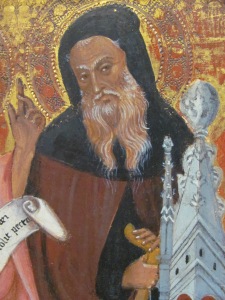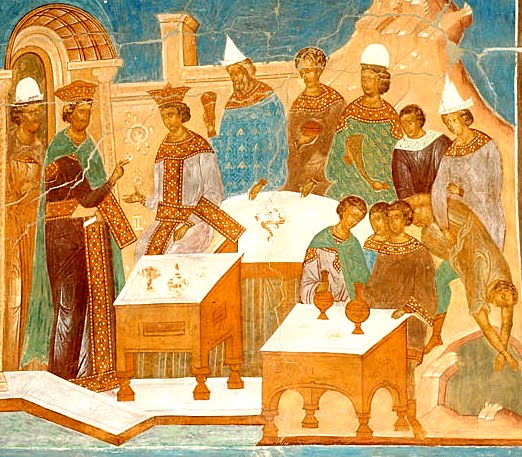As you may see in the sidebar of this blog, I am on Twitter. I initially joined under my own name in 2017 as a means to have and control a public professional persona. This purpose remains, but, after starting to teach for Davenant Hall, this public persona has expanded to include some of my own personal religious views, including this blog. And, to be honest, this self-promotion is also aimed to hopefully gain a few students.
Twitter — and even a private Discord server such as we have for The Davenant Institute — can be a great way to meet people. I have expanded my army of friends, and I am happy for that. Twitter and other social media — Facebook, Instagram, etc. — can also be a great way to distract yourself. And be endlessly distracted.
Sometimes, it’s okay. I’m willing to concede that we need a bit of distraction sometimes. It’s part of relaxation and restoration, I think. Take your mind off the pressures of daily life by following, say, @red_loeb to see images from medieval manuscripts, to name just one example. There are some interesting, amusing, informative, entertaining Twitter accounts to add to your feed.
Sometimes, it’s less okay. Like, say, the vast eruptions that happened after the USA’s Supreme Court overturned Roe v. Wade. Or when you see some less-than-pleasant characters falsely characterising your own religious beliefs. Or when you watch, say, a video of a news presenter taking down a flummoxed pastor over hot-button cultural issues. You get this fire burning in you, sometimes. Or you can’t direct your energy where it should be (*glances at The Life of Saint Pachomius*), continually thinking about the assault you have levelled against your nous.
I once Tweeted that Twitter is like having your nous assaulted by all 8 Evagrian thoughts at once.
The monks of the Desert would not have appreciated something like Twitter. Tonight in my Desert Fathers course for Davenant Hall, I am teaching about Pachomius, the reputedly first abbot of a coenobium, of a monastery designed for communal living. The monks were meant to live undistracted lives. This meant that if any of them had to leave the monastery on business, they weren’t allowed to tell the brothers what they had seen or heard. If someone came to the monastery, the porter was the only person they were allowed to interact with. Tabennisi, the village where the first Pachomian monastery was founded, was an abandoned village. Even walks in the abandoned village were not allowed.
Elsewhere, of course, in the anchoritic literature, we hear of monks refusing to listen to news of the outside world. Or they ignore people from outside sometimes. They avoid talking, even if news isn’t the subject. Curiosity, even about ones family that was left behind, is considered dangerous.
The point of all this is to help cultivate a heart that is undistracted and undivided. The monk is someone who is single-minded. Monks are monomaniacs for God. They aren’t interested in the emperor’s doings. They aren’t interested in visits from the priests of the outside world. They aren’t even that interested in the inner world of their souls, except inasmuch as it can help or hinder in the raising up of the monk to God.
Now, Twitter is actually part of my livelihood, since tuition pays my salary. So I’ll stay there. But we all need to know when to logoff and unplug and sit, undistracted, pursuing God with all our heart, soul, mind, and strength. The simplicity of the monks and their spiritual practices, I believe, can help us there.
For me, as you no doubt know, a major monastic practice has been the Jesus Prayer — listen to my and my brother’s podcast to hear some more!








